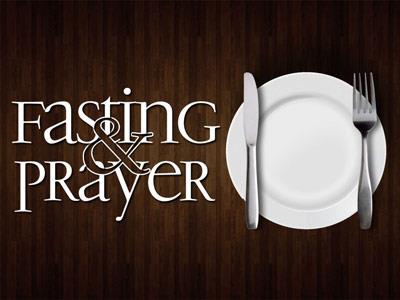-
The Savior's Prayer
Contributed by Mary Erickson on May 18, 2021 (message contributor)
Summary: A sermon for the 7th Sunday in Easter, Year B
May 16, 2021
Hope Lutheran Church
Rev. Mary Erickson
John 17:6-19; Psalm 1
The Savior’s Prayer
Friends, may grace and peace be yours in abundance in the knowledge of God and Christ Jesus our Lord.
We’re drawing to the end of another school year. For some families, this end of year will mark a closure: a son or daughter is graduating! They’re finishing one chapter and ready to move on to whatever comes next. It might mean more school. Perhaps they’re signing up for service in our nation’s military. Or they might be stepping directly into the work force. But change is on the way. The old will be no more.
These parents will be very busy in a certain activity. They’re no strangers to it; they’ve engaged in this for a very long time. Mom and dad have been at it since their child’s first day of kindergarten. Even earlier, it’s something they did on their son or daughter’s first day of life, and even before that. What are they doing? They’re praying! They’re praying for their child.
What do you pray for your child? How does one best pray? You want your child to be successful in life. But you don’t want them to be coddled. Challenge is good. A certain amount of struggle is part of life; you don’t grow strong and wise without it. We learn valuable lessons through suffering. So how is a parent to pray?
We want them to be rooted in the world. But, at the same time, we want them to remain grounded to principles of justice and compassion. We want them to face adversity and challenge, but not so much that they’re overwhelmed by danger or hammered down by disappointment. It’s a fine balance, what we pray for.
Jesus was faced by a similar complexity in his few final hours of his life. As time with his disciples was drawing to a close, Jesus prayed for them. We hear part of his prayer today from John 17.
Very soon he will no longer be a part of this world that God has so loved. But his disciples will remain. They will form the nucleus of the community to follow. They will be the Church, the Church of Jesus Christ. His prayer doesn’t contain pleas for a rosy, sun-kissed future free from conflict and suffering. No, his prayer is very earthy. But for as gritty as it is, it’s also hopeful and promising.
He leads off with a plea for unity. Jesus prays that his church might be every bit as unified as he is with his heavenly Father. They are of one mind and heart. Jesus’ motivations and purpose are perfectly attuned to God’s will.
During the three years he lived with his disciples, Jesus was the physical and visible example of the transcendent and invisible God. When his disciples listened to Jesus, when they watched his actions of compassion, it was as if they were witnessing God. God’s words were Jesus’ words, and Jesus’ words were God’s word. He was the Word-made-flesh.
But in the very near future, Jesus will no longer be with them. He prays that they may remain unified. “Make them one as we are one,” he prayed. As Christ’s church on earth, we’re Christly ambassadors in the here and now. As my favorite theologian, Jurgen Moltmann, writes, “The church exists for Christ’s sake.”
That is our unity. We exist, as a community, in mission, in purpose, in service, for Christ’s sake. He is our uniting force. In all of our tremendous diversity, we are united in Christ. And in being one with Christ, we are one with the Father.
If you think about an orchestra, it’s filled with a tremendous diversity of instruments. They look different, they sound different. Consider the piccolo and the tuba! Compare the harp with the kettle drum! Picture a violin and a bassoon. They’re all so very different!
Before a performance, all of the instruments are practicing scales, going over challenging spots in pieces, or just playing random things. But there comes a moment when they all stop. The oboist stands up and plays an A note. All of the other instruments then tune their own instruments to match the oboe’s pitch.
After they’ve become tuned, then the cacophony starts up again. This continues until the conductor arrives. The orchestra falls silent. The conductor takes the stand and raises her baton. All eyes are on the conductor. The next time the orchestra sounds, they will be as one. One, despite their diversity, completely unified. Focused as one unit with a common pursuit, but rich in character because of their beautiful diversity. Attuned to one another, they move, they make music through the direction of the conductor.
As the church we are remarkably, wondrously diverse. And our broad range in talents and backgrounds, in perspectives and individual characteristics, this wideness is our strength; it blesses our community. When we respect one another and listen to each other, we’re like the orchestra coming into tune. And when we exist for Christ’s sake, then all of our diversity becomes focused in mission and purpose.

 Sermon Central
Sermon Central



